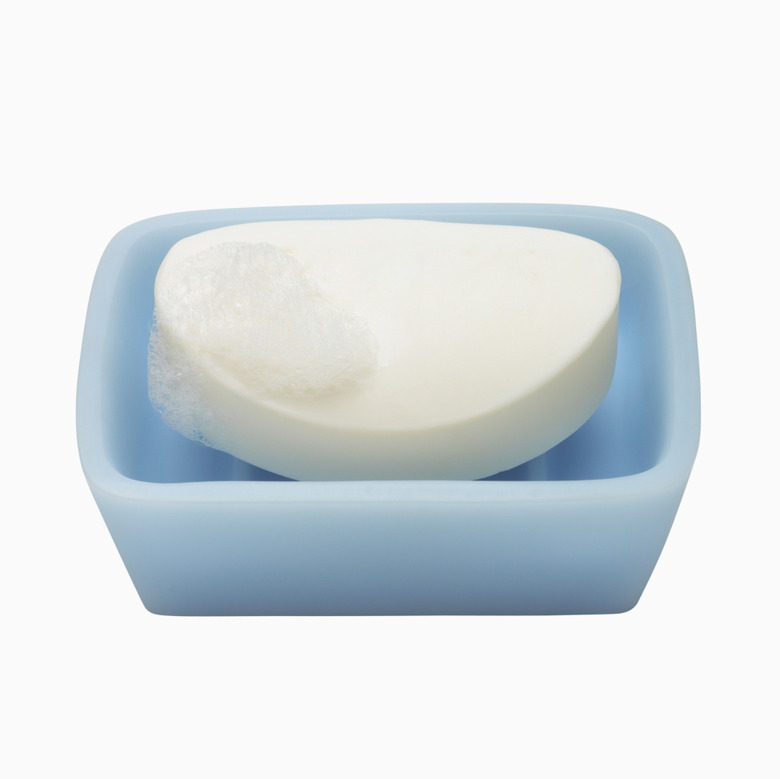When Does A Hydrolysis Reaction Occur?
Hydrolysis reactions occur when organic compounds react with water. They are characterized by the splitting of a water molecule into a hydrogen and a hydroxide group with one or both of these becoming attached to an organic starting product. Hydrolysis usually requires the use of an acid or base catalyst and is used in the synthesis of many useful compounds. The term "hydrolysis" literally means to split with water; the inverse process, when water is formed in a reaction, is called condensation.
The Hydrolysis Mechanism
The Hydrolysis Mechanism
Carboxylic acid derivative hydrolysis is a type of reaction called acyl substitution. An acyl group features a carbon-oxygen double bond, on which there is small but crucial charge differential. Reactions occur at the acyl because reactants are attracted either to the slightly electrically positive carbon atom or the slightly electronegative oxygen atom. The general reaction mechanism for acyl substitution is: R-C(=O)-X + E-Y -> R-C(=O)-Y + E-X, where E is an electrophilic group, meaning it is attracted to negatively charged atoms, and Y is a nucleophilic group and so it's attracted to positively charged atoms. R denotes a functional group, such as a hydrocarbon that does not take part in the reaction. Examples of X include chlorine or bromine for an acid chloride or bromide, a -OR for a carboxylic ester or an -N(R)_2 from amides.
Making Soap as an Example of Base Catalyzed Hydrolysis
Making Soap as an Example of Base Catalyzed Hydrolysis
Making soap, also called saponification, is one of the most common hydrolysis reactions. Soap was first produced by the Sumerians at least 5,000 years ago, almost certainly by accident. The Sumerians and subsequent races discovered that mixing ashes or another alkaline substance with oil or fat produced a substance that was excellent at removing dirt from skin and clothing. This happened because the alkali reacted with the oils to produce soap. The modern method for producing soap comprises reacting a fatty acid with an base, such as sodium hydroxide. This produces a fatty acid salt, which solubilizes otherwise non-water soluble substances like oil and grease. Saponification is an example of a based catalyzed reaction, with the base acting as both a starting material and a catalyst.
Other Hydrolysis Mechanisms
Other Hydrolysis Mechanisms
Acids can also be used as catalysts to initiate reactions at the acyl group. Acidifying water produces a reactive hydronium ion that is positively charged and, therefore, strongly attracted to the oxygen on the acyl group. The two groups join to form an intermediate in which the acyl carbon becomes electronegative and attractive to a nucleophile, such as the lone electron pairs on the oxygen of a water molecule. A second intermediate rearranges to cleave a carbon-oxygen single bond to produce a carboxylic acid and water.
Hydrolysis of Proteins
Hydrolysis of Proteins
Given that biological systems all exist in water, it is understandable that hydrolysis reactions are common in living organisms. Proteins are formed by linking amino acids together in long chains. These amino acids are linked by reacting a carboxylic group on one amino acid with an amine group on another with the generation of water in a process called condensation. The reverse process, hydrolysis, causes proteins to split up into their constituent amino acids. This is very useful in determining the structure of proteins in a process call amino acid analysis.
References
- Open2.net: The History of Soapmaking
- "Organic Chemistry"; G. Marc Loudon; 1995
Cite This Article
MLA
Beglan, Richard. "When Does A Hydrolysis Reaction Occur?" sciencing.com, https://www.sciencing.com/hydrolysis-reaction-occur-10071954/. 24 April 2017.
APA
Beglan, Richard. (2017, April 24). When Does A Hydrolysis Reaction Occur?. sciencing.com. Retrieved from https://www.sciencing.com/hydrolysis-reaction-occur-10071954/
Chicago
Beglan, Richard. When Does A Hydrolysis Reaction Occur? last modified March 24, 2022. https://www.sciencing.com/hydrolysis-reaction-occur-10071954/
